The Black and White Colobus | Old world monkey
The Black and White Colobus | Old world monkey : also termed to as an Old World monkey is a native to central Africa. They have a scientific name known as the mantled guereza, that derives from its mantle, the long silky white fringe of hair that runs along its body. On the other hand, “Guereza” derives from the native word in Ethiopia meaning monkey. Additionally the scientific name colobus derives from a Greek word “kolobus” meaning “Mutilated” which refers to its lack of thumbs. The specie generally has a distinctive black and white coloration, with long white fur on their backs. In addition, they are unusual in a way that they possess no thumbs and only have four fingers on their hands though some individuals will have a partial thumb that is not used.
The Black and White Colobus facts
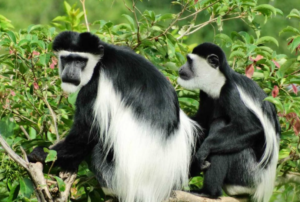 Physical description
Physical description
These are basically heavy bodied animal with a long tail. They basically possess only four fingers on each hand. In fact, the thumb is absent or represented by a small phalangeal tubercle that sometimes bears a nail. However, it is believed that the loss of the thumb may be an adaption for quick movements through and along the trees. The coloration of the fur is distinctly white and black, the face is grey, no fur, face and callosities are surrounded by white. More so, the coat is glossy black along with a U-shaped white mantle of varying length harbored on both sides.
Reproduction
Colobus Guereza generally have a polygamous mating system. It has also been studied that there seems to be little or no reproductive seasonality in most populations of the colobus. However, they tend to have a birth peak, timed out so that weaning corresponds with the greatest seasonal abundance of solid food. There is no distinct breeding seasons however, most mating definitely occurs mainly in the rain season. The full sexual maturity of the male guereza is always at the age of 6 and in females is 4 years of age.
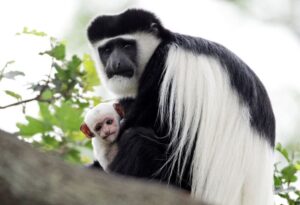
Besides, the female produces one young every after 20 months of her gestation period which is about 6 months before giving birth again. When giving birth, females usually tend to give birth in private, and solitude. In fact, they have been noticed helping themselves when giving birth. Other troop members often handle very young infants and the infants are carried on the other’s abdomen where it clings to her fur. Generally, both the male and the female take part in the parenting of the child. Otherwise, females remain in their natal group meaning that mothers and daughters have life-long relationships.
Behavior
They are typically diurnal and are highly arboreal residents of deep forest. They also live in sexually mixed groups ranging from 8 to 15 individuals. The family usually consists of one fully adult male (dominant), three or four reproducing females, adolescents and infants. Furthermore, each troop has its own territory which is well defined and defended from other troops. The colobus spends much of their time sitting in the tops of trees. However, they take turns sleeping at night so that at least one individual is awake at all times to watch over for predators.
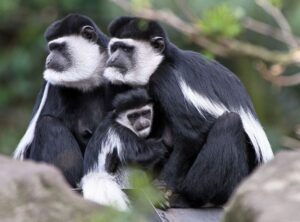 There is always no true leader of a group although strong males usually take leadership roles. Territories may overlap and marginally they are vigorously defended by males. These territories are defended by leaps and cries, hand-to-hand communication, fighting, etc. Additionally the displays of the white fringe fur flapping up and down serve as a warning to other animals. In order to have defense against their predators like eagles, the species simply attempts to avoid and hide from them. However, they also at times been seen in fights against other types of animals a practice termed to as baiting.
There is always no true leader of a group although strong males usually take leadership roles. Territories may overlap and marginally they are vigorously defended by males. These territories are defended by leaps and cries, hand-to-hand communication, fighting, etc. Additionally the displays of the white fringe fur flapping up and down serve as a warning to other animals. In order to have defense against their predators like eagles, the species simply attempts to avoid and hide from them. However, they also at times been seen in fights against other types of animals a practice termed to as baiting.
Life span
These colobus live up to 20 years typically in the wild and have been known to live 25-30 years in captivity. Otherwise, predators of black and white colobus are leopards, crowned hawk eagles and occasionally chimpanzees.
Communication
Five vocal sounds have been recorded such as snorts, honks, screams, purrs and roars. Additionally, in terms of vocal communication, visual signals such as facial expressions, flapping of fringe fur and body postures are used in aggressive communication between different groups.
Feeding
Guereza are the second most folivores species among the colobus. Their diet comprises of primarily leaves with nearly of young unripe ones, mature leaves, fruits, leaf buds and blossoms. However, this distribution is highly varied seasonally and geographically thus at times mature leaves may account in the diet. Additionally, they get water from dew and the moisture content of their diet or rainwater held in the tree trunk hollows. Nevertheless, they spend most of their days eating, relaxing almost like humans.
Habitant
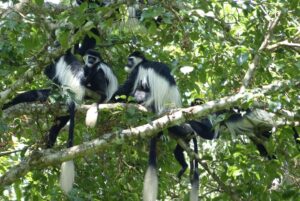 Their habitat ranges from tropical forests to dry forests and scrublands. They are generally found in high density forests where they forage on leaves. While in forests, they are highly arboreal and spend most of their time in the trees. However, in less dense forests, they will travel along the ground. Besides, they spend most their time searching for food and resting. In Uganda, they can be viewed in different national parks. Some of these include; Kibale National Park, Queen Elizabeth National Park, Semuliki National Park, etc. They are also noted among the popular primate species sought after on wildlife safaris in Uganda.
Their habitat ranges from tropical forests to dry forests and scrublands. They are generally found in high density forests where they forage on leaves. While in forests, they are highly arboreal and spend most of their time in the trees. However, in less dense forests, they will travel along the ground. Besides, they spend most their time searching for food and resting. In Uganda, they can be viewed in different national parks. Some of these include; Kibale National Park, Queen Elizabeth National Park, Semuliki National Park, etc. They are also noted among the popular primate species sought after on wildlife safaris in Uganda.
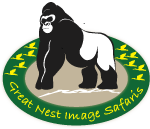
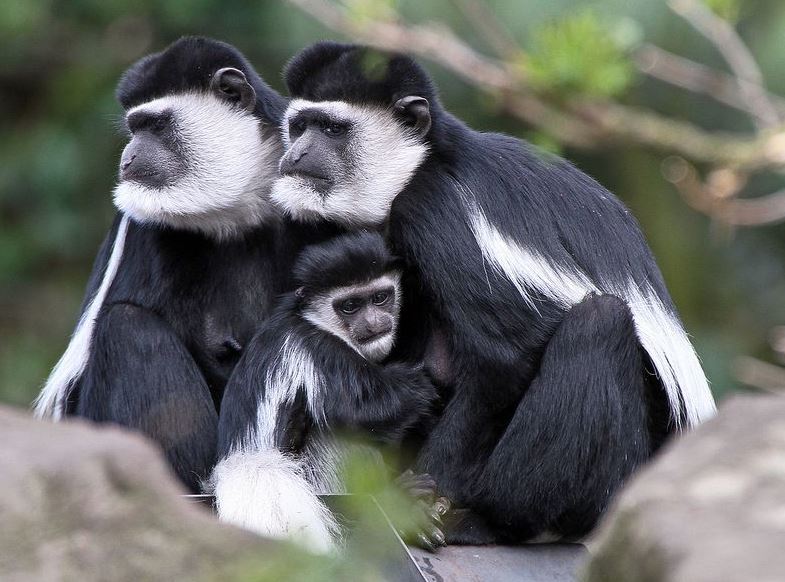
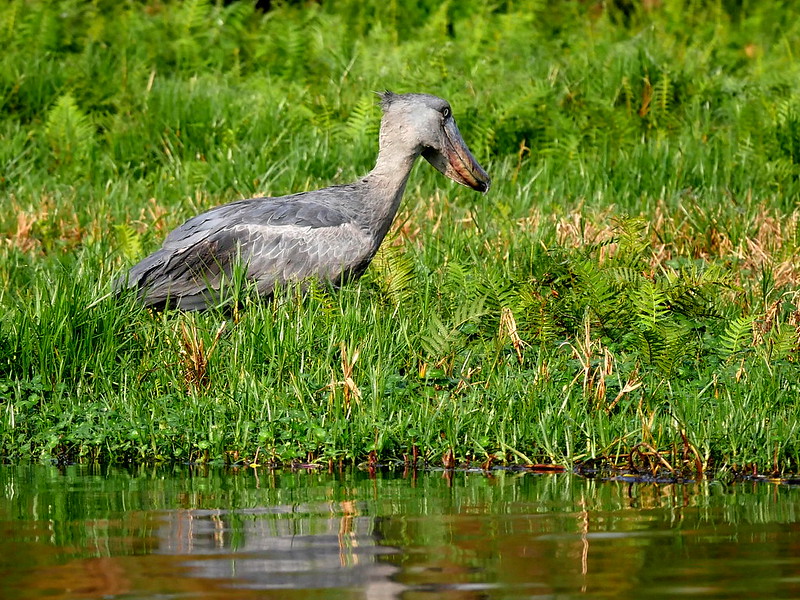
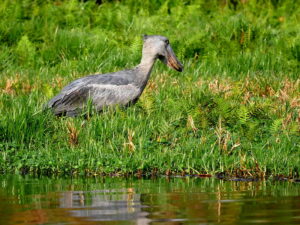 As a matter of fact, the mysterious shoebill is known to occur in mainly four countries. These include;
As a matter of fact, the mysterious shoebill is known to occur in mainly four countries. These include; 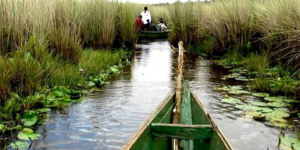
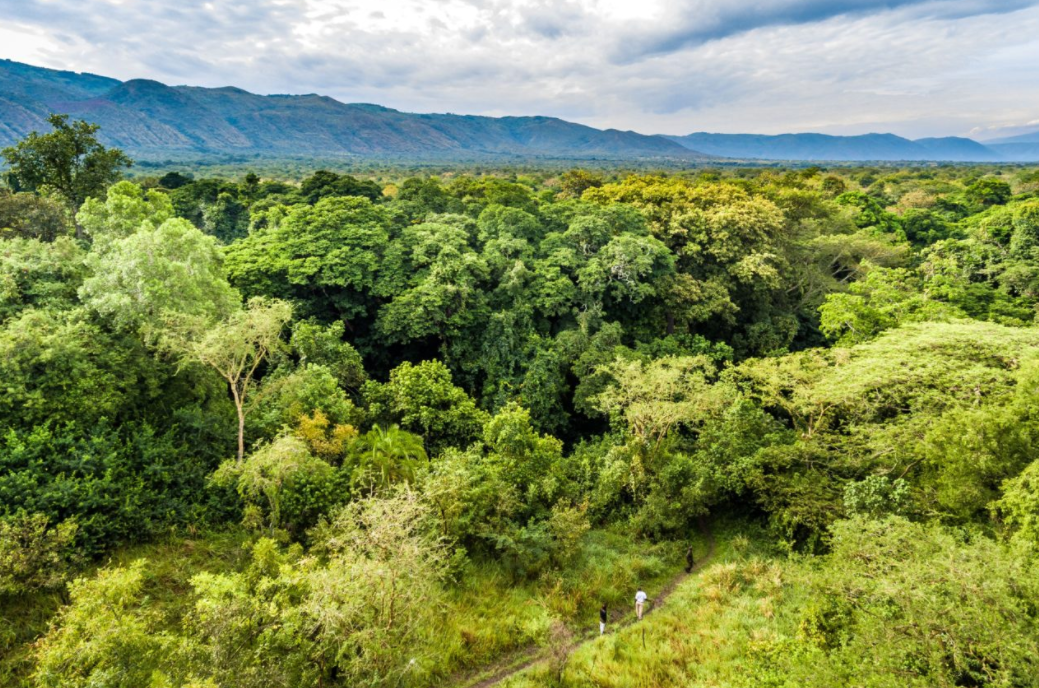
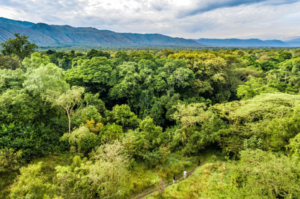 The main reason was to protect the large numbers of Uganda kobs in the area which is within Ntoroko and Kabarole districts.
The main reason was to protect the large numbers of Uganda kobs in the area which is within Ntoroko and Kabarole districts. 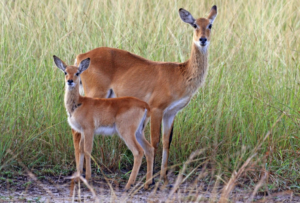 Game drives
Game drives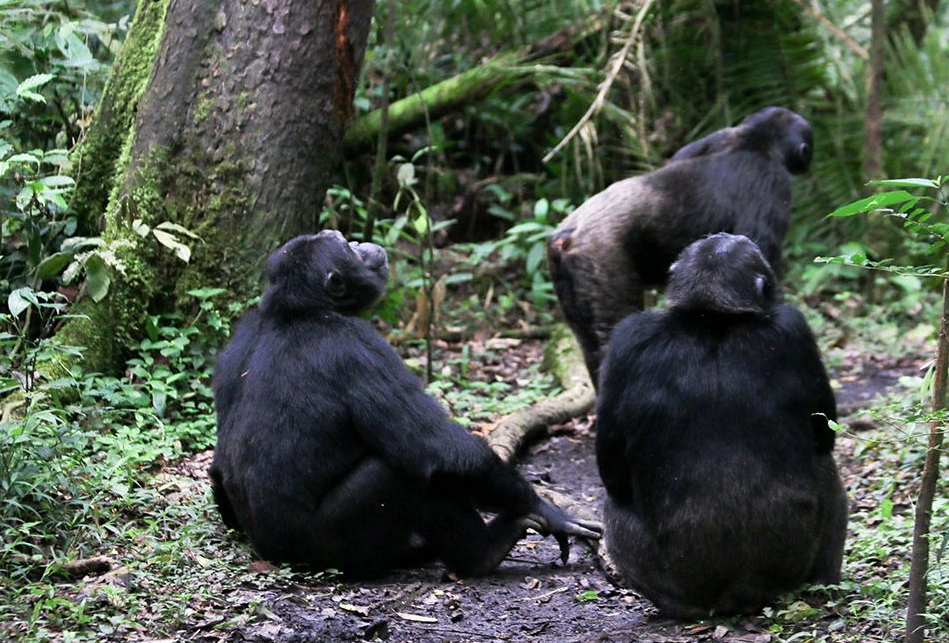
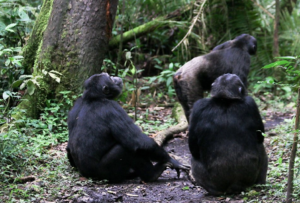
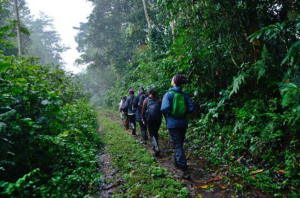 This is a 5 kilometer’s trail which takes you approximately 2 hours depending on your hiking speed. You will pass through its woodland trees and get to see unique tree species while crossing through a comparatively flat terrain in this reserve. While here, tourists are rewarded with wonderful tree species found along the path. Some of these include; the popular and interesting one being the flame tree also known for its vast. Red tulip-like flames which are believed to increase libido in women, the Raphia palm tree commonly used to making mats, ropes, baskets, etc.
This is a 5 kilometer’s trail which takes you approximately 2 hours depending on your hiking speed. You will pass through its woodland trees and get to see unique tree species while crossing through a comparatively flat terrain in this reserve. While here, tourists are rewarded with wonderful tree species found along the path. Some of these include; the popular and interesting one being the flame tree also known for its vast. Red tulip-like flames which are believed to increase libido in women, the Raphia palm tree commonly used to making mats, ropes, baskets, etc.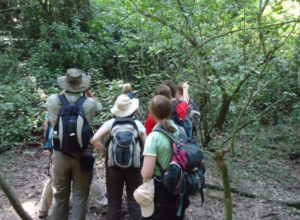
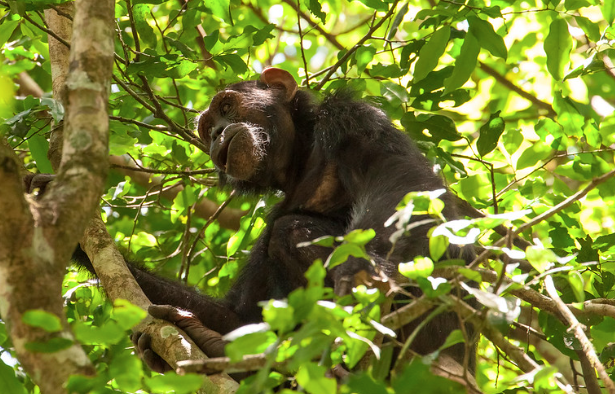
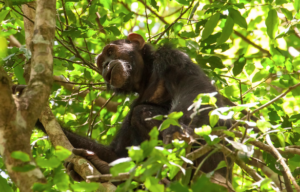 This pristine forest reserve has an amazing number of plant species whereby over 465 plant species have been recorded. Apart from the giant mahogany trees, other trees include; the spiky fagara trees, parasitic strangler figs and iron wood trees. The forest offers an extremely rich biodiversity including over 24 mammals, over 9 primates, over 280 butterfly species and birds species. It is also a natural habitat of more than 600
This pristine forest reserve has an amazing number of plant species whereby over 465 plant species have been recorded. Apart from the giant mahogany trees, other trees include; the spiky fagara trees, parasitic strangler figs and iron wood trees. The forest offers an extremely rich biodiversity including over 24 mammals, over 9 primates, over 280 butterfly species and birds species. It is also a natural habitat of more than 600 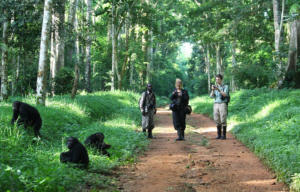 This activity is generally the number one priority in the reserve and led by an experienced ranger. The time when the fruits are shorter in supply, the
This activity is generally the number one priority in the reserve and led by an experienced ranger. The time when the fruits are shorter in supply, the 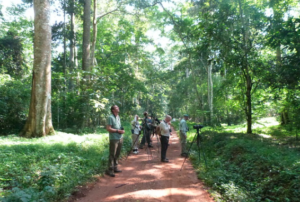 The forest is also a home to some of the rarest birds in East Africa. Its a habitat to over 360 bird species both migratory and residential. Some of the birds here include; forest robin, African emerald cuckoo, yellow and grey long bill. Yellow browed camaroptera, black headed flycatcher, chocolate backed kingfisher, white spotted flufftail, lemon bellied crombec, etc.
The forest is also a home to some of the rarest birds in East Africa. Its a habitat to over 360 bird species both migratory and residential. Some of the birds here include; forest robin, African emerald cuckoo, yellow and grey long bill. Yellow browed camaroptera, black headed flycatcher, chocolate backed kingfisher, white spotted flufftail, lemon bellied crombec, etc.




